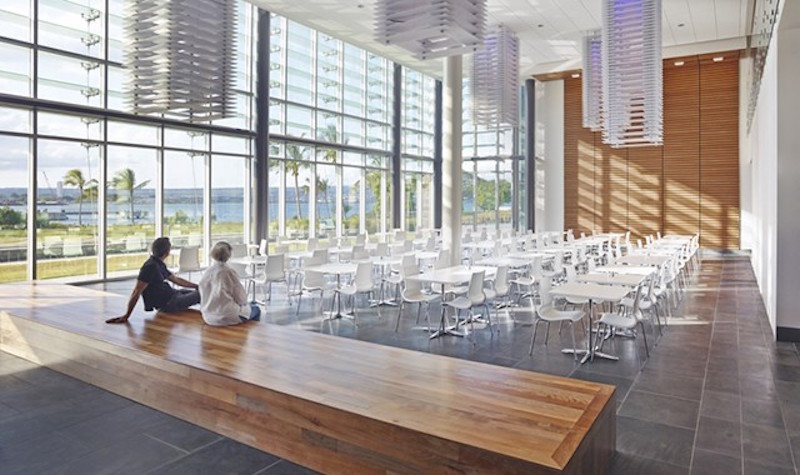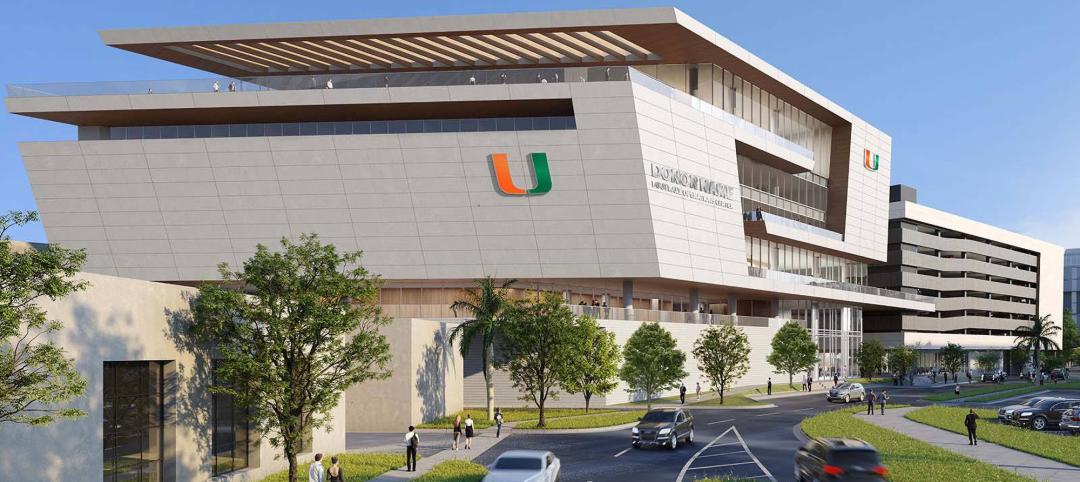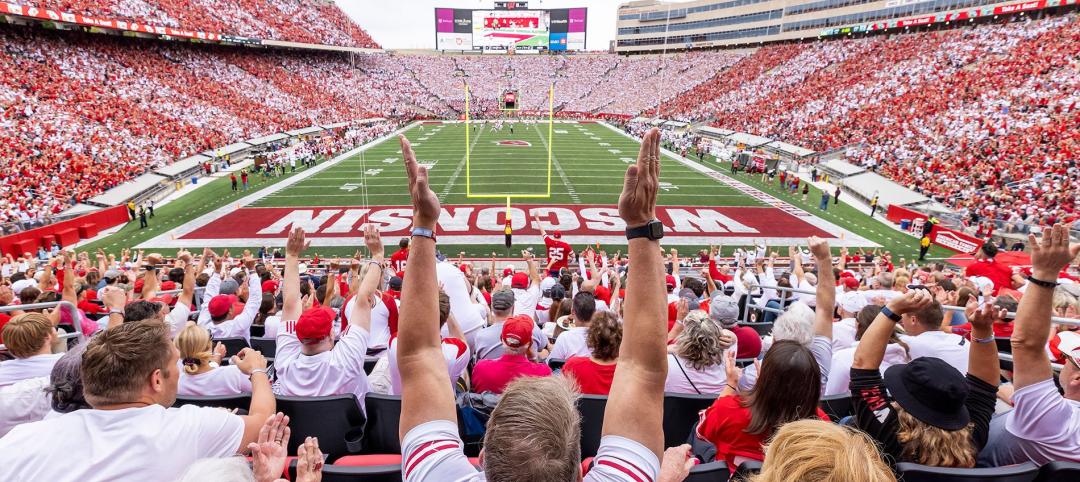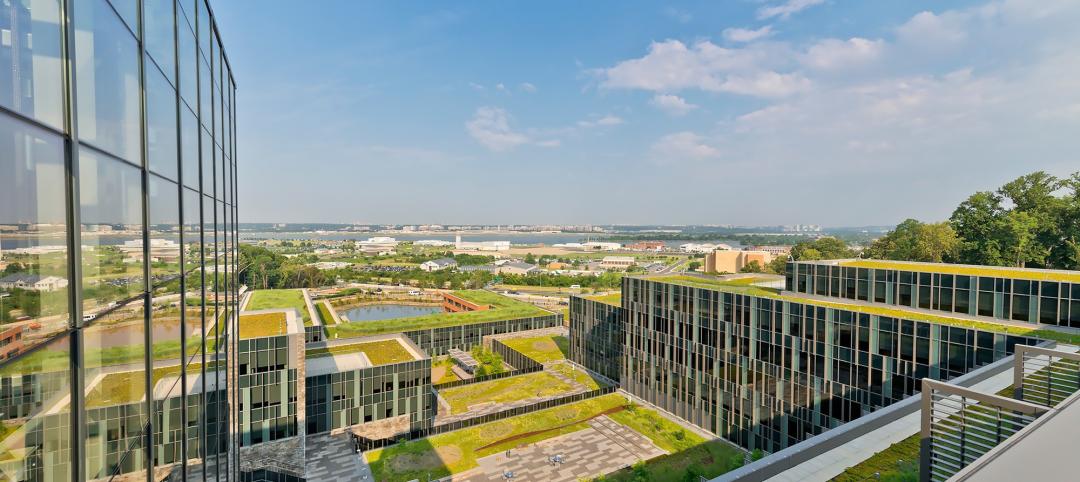The business case for sustainable design keeps getting stronger. Consider these takeaways from the World Green Building Trends 2016 Smart Market Report:
- High-performing buildings can be sold at a premium, with the average green building worth 7 percent more than its traditional counterpart.
- Green buildings, on average, are 14 percent less costly to operate than traditional buildings, with most new builds today achieving significantly more energy savings than that.
- Market demand for green building is doubling every three years.
That second bullet—the operational savings over the lifespan of a building—gets most of the attention when it comes to sustainable design. Yet what impact does sustainable design have on owners with a finite construction budget or developers who won’t own the building after construction? Historically, this group has been told that a high-performing building will only cost them more money to construct—dollars that may not be available in project financing. But it is no longer true that sustainable buildings have to be more expensive.
We have delivered many deep green projects that came in below cost or at similar price points to what those same buildings would have cost without sustainable design elements. We did this by focusing on three tactics for improving sustainability: leveraging integrated design, employing energy modeling and programming for efficiencies.
Integrated design helped the LEED-Platinum DC Consolidated Forensic Lab come in 17 percent under budget.
LEVERAGING INTEGRATED DESIGN
With integrated design, all stakeholders—architect, mechanical engineer, contractor, preconstruction services consultant, cost estimator, building owner and operator, and other consultants—collaborate early and often to understand how building systems link to one another and then use that knowledge to find efficiencies and tradeoffs. While this approach requires more planning on the front end, it often leads to free or passive solutions that reduce system loads and building costs. Integrated design might reveal, for example, how a slight modification to a building’s orientation can reduce solar heat gain and increase natural daylighting, resulting in less expensive HVAC and lighting components.
Our work provides a real-world example of how integrated design can lead to first-cost savings. The LEED Platinum building in Washington, D.C., came in 17 percent under budget with much of the savings due to its sustainability. For instance, collaboration with the project’s mechanical engineer, Vanderweil, resulted in outfitting the building with an active chilled beam system, heat shift chiller, enthalpy wheels and glycol energy recovery loops that reduced the mechanical load of the building and the number of chillers that would have been required with a traditional HVAC system. Because chilled beams are a hydronic system that do not require nearly as much plenum space as traditional air ducts, we were also able to reduce the floor-to-floor height of the building, which led to construction and material savings.
As part of the integrated design process, we knew that the building operator desired sustainable features to reduce long-term energy use and costs. This information allowed us to incorporate a dynamic glass louver wall along the building’s south facade. The glass louvers (featuring a 50 percent ceramic frit pattern) serve as a solar shield, automatically adjusting, opening and closing depending on sun angle, wind and barometric pressure. Unlike a true double-skin facade, the louvers—set three feet off the curtainwall—allow the airspace between the exterior wall and sunscreen to vent without impacting air pressurization requirements in the interior lab space while at the same time mitigating solar heat gain and glare along the south of the building.
Energy modeling revealed how a passive cooling system could cut expenses at NOAA’s Pacific headquarters.
ENERGY MODELLING
Energy modeling—software simulation that provides detailed analysis of a building’s energy use—helps us understand long-term and short-term consumption costs. This crucial component of integrated design often leads to additional savings and helps justify the costs of sustainability features that might not be immediately apparent.
Energy and computational fluid dynamics (CFD) modeling of the National Oceanic and Atmospheric Administration Daniel K. Inouye Regional Center in Pearl Harbor, Hawaii, which was honored with an target="_blank">AIA COTE 2017 Top Ten Green Project award, showed how a passive cooling system would provide substantial operational and first-cost savings compared to other HVAC options. The novel cooling system we used on the building pumps cold seawater from a 1,300-foot-deep well to the buildings chillers where heat is rejected into the seawater, eliminating the need for traditional cooling towers. The seawater then flows into a series of chilled coils. The system takes advantage of the trade winds to drop chilled air passing over the coils into the building without using mechanical fans.
Deep seawater is pumped to the rooftop of NOAA’s Inouye Center. Trade winds then send water-cooled air into the building.
Savings from the cooling system allowed the design team to outfit the LEED-Gold project with additional sustainable design features, such as increased daylighting. Designers used small-scale mockups to test the size and spacing of daylight openings to provide even daylight levels across office work areas. As construction proceeded, full-scale mockups fine-tuned the team’s initial daylight studies, ensuring that interior workplaces took advantage of the maximum amount of natural light while also blocking direct sun exposure. Once in operation, the NOAA Inouye Regional Center achieved 33 percent annual energy savings in addition to its first-cost neutral sustainable design.
Energy modeling isn’t just for building owners who care about sustainability or LEED certification. Energy modeling can often find savings that far exceed the costs of setting up and running the energy simulation software.
In Washington, D.C., we designed a multi-building commercial office project Constitution Square Buildings 1, 2, 3 that achieved LEED Platinum status without additional building costs. For the final phase of that project, Constitution Square Building 4, the developer secured a full-building tenant and hoped to leverage building performance to position the structure for higher resale value without increasing first costs. Energy modeling on that project, however, revealed that by reducing the building’s window-to-wall ratio from 56 percent to 51 percent and improving the window glazing, the design team could reduce the number of chillers that service the building. In this case, the energy model ROI was dramatic—an investment of $24,000 to perform iterative modeling at all design and Value Engineering stages netted approximately $500,000 in first-cost reduction, bringing the mechanical system back into budget while maintaining 35 percent energy savings. The developer has since sold the building (still under construction) at a price that reflects its high-performance design.
A review of how employees would use NASA Building 20 allowed HOK designers to reduce its size by 11 percent.
PROGRAMMING FOR EFFICIENCIES
Taking a detailed look at how many people will occupy a building and how they will use the space can help teams design for efficiencies.
HOK’s work on NASA Johnson Space Center Building 20 in Houston shows how using this planning strategy can both reduce costs and improve a building’s sustainability. In the RFP for the project, NASA specified it wanted a LEED-Silver building of approximately 93,000 square feet. In reviewing how the building’s 520 employees would use the space, our team was able to reduce the overall building size by 11 percent while still meeting the requirements of the agency’s occupants.
In reducing the square footage of NASA Building 20, the design team was able to add other sustainability features, such as a sloped ceiling that allows daylight to penetrate deeper into the interior space.
Savings from the compact design opened the budget for additional sustainability features—including exterior sunshading devices, advanced lighting controls, a building section optimized for daylighting and an underfloor air distribution (UFAD) system—that ultimately earned the project 57 percent energy savings and LEED-Platinum status without going over budget.
IF NOT FIRST-COST SAVINGS, THEN WHAT?
The previous examples demonstrate how a holistic design approach can enable clients to build higher-performing projects for a lower cost than initially expected. But even if sustainable design does not lead to first-cost savings or neutral building costs compared to more conventional designs, there still are reasons to consider sustainable strategies.
Our internal research, for example, has found that if energy modeling doesn’t pay for itself during design and construction, it almost always will within the first few months of a building’s operation. And, as the Department of Energy has reported, that’s true regardless of building type—be it an office building, hotel, hospital or research lab.
The bottom line is sustainable design is more achievable than ever and no longer has to be more expensive to deliver. The key is getting all parties to invest the time and resources early on—and throughout the process—to fully explore the options and understand how they can improve a project.
Anica Landreneau, Assoc. AIA, LEED AP, works out of HOK’s Washington, D.C., office and is the firm’s director of sustainable design. In addition, she oversees HOK’s efforts to achieve a carbon-neutral design portfolio by 2030.
More from Author
HOK | Apr 2, 2024
How university rec centers are evolving to support wellbeing
In a LinkedIn Live, Recreation & Wellbeing’s Sadat Khan and Abby Diehl joined HOK architect Emily Ostertag to discuss the growing trend to design and program rec centers to support mental wellbeing and holistic health.
HOK | Jan 25, 2024
40 Under 40 Class of 2023 winner Kimberly Dowdell inaugurated as AIA 2024 President
The American Institute of Architects (AIA) has announced the inauguration of Kimberly Dowdell, AIA, NOMAC, NCARB, LEED AP BD+C, Principal and Director of Strategic Relationships at HOK and BD+C 40 Under 40 superstar, as its 100th president.
HOK | Jul 13, 2023
Deep green retrofits: Updating old buildings to new sustainability standards
HOK’s David Weatherhead and Atenor’s Eoin Conroy discuss the challenges and opportunities of refurbishing old buildings to meet modern-day sustainability standards.
HOK | Jun 5, 2023
Office design in the era of Gen Z, AI, and the metaverse
HOK workplace and interior design experts Kay Sargent and Tom Polucci share how the hybrid office is evolving in the era of artificial intelligence, Gen Z, and the metaverse.
HOK | May 5, 2023
9 workplace design trends for 2023
HOK Director of WorkPlace Kay Sargent and Director of Interiors Tom Polucci discuss the trends shaping office design in 2023.
HOK | Apr 4, 2023
6 examples of modern college training facilities
HOK discusses the future of college training facilities, with six design takeaways derived from a discussion between Dan Radakovich, Director of Athletics at the University of Miami, and Trevor Bechtold, Director, HOK’s Sports + Recreation + Entertainment practice.
HOK | Feb 23, 2023
Using data to design the sports venue of the future
Former video game developer Abe Stein and HOK's Bill Johnson discuss how to use data to design stadiums and arenas that keep fans engaged and eager to return.
HOK | Jan 23, 2023
How regenerative design is driving AEC industry innovation
HOK's Sean Quinn and Microsoft's JoAnn Garbin discuss the next step of sustainability: regenerative design.
HOK | Nov 23, 2022
7 ways the Inflation Reduction Act will impact the building sector
HOK’s Anica Landreneau and Stephanie Miller and Smart Surfaces Coalition’s Greg Kats reveal multiple ways the IRA will benefit the built environment.
HOK | Jul 19, 2022
All is not lost: 3 ways architects can respond to the Supreme Court’s EPA ruling
The U.S. Supreme Court’s ruling to limit the Environmental Protection Agency’s power to regulate greenhouse gas (GHG) emissions from power plants dealt a significant blow to our ability to fight the climate crisis with federal policy.
















